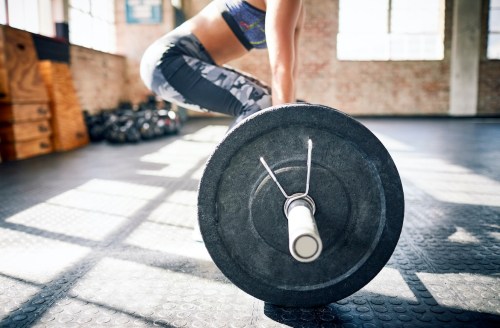“Hinge at your hips!” It’s one of those ubiquitous cues that trainers throw out in almost every yoga or strength training class you take. The movement pattern seems straightforward at first, but it can be difficult in practice (especially for those of us with tight hammies and not-so-great lower backs). So to clear up how to hinge at the hips for any level of mobility and flexibility, we asked trainer Dave Schenk, CSCS, NASM, founder and co-CEO of LIFT Society, to clear this cue up before your next training session.
Experts in This Article
Dave Schenk is a personal trainer and the founder and co-CEO of LIFT Society.
“One of the best ways to visualize a hingeing motion is to imagine trying to close a car door with your hands full of groceries. You simply stand in front of the door and send your hips back into it, and it closes,” says Schenk. It’s a funny visual, sure—but that car butt bump translates directly to workout moves like a deadlift or forward folds in yoga. (So it’s time to pay a little more attention to your form when you get home from Trader Joe’s.)
When your first warming up to the idea of practicing the booty twerk (I mean, hip-hingeing) at your home gym, Schenk recommends starting with light weights to avoid straining any muscles. “Hingeing exercises, like the deadlift, can be problematic if you go too heavy too soon,” he says. “Here’s why: The deadlift works the whole back of your body—think hamstrings, glutes, and all your back muscles from the bottom to the top.” This band of muscles forms the posterior chain, which is often weak for beginner strength trainers because modern-day life is so intertwined with sedentary behavior. “You should go light when you first start to deadlift because even though it won’t feel extremely challenging for your body, your low back will be working overtime to get the weight off the ground,” adds Schenk. Over time, your back will strengthen—and will no longer need special treatment.
Besides embracing lighter weights initially, Schenk also says those with tight legs should focus on modifications that keep them from rounding forward in the back. “A perfect modification of the classic deadlift would be the Romanian deadlift,” he says. “Instead of starting with your weights on the ground, you will pick them up from the safety bars [at the gym]. You then will send your hips back similar to the deadlift, but instead of lowering the weight all the way to the floor, you will only lower the weight below your knees. This will stretch and activate your hamstrings before you stand up and return to the starting position.” This way, you’re getting a killer workout while teaching your body to tolerate the larger range of motion you’ll need to full “hinge at the hips” for future deadlifts.
No matter what modifications you choose to make this move fit you (and not the other way), Schenk says you’ll see a huge difference in how hingeing at the hips makes you feel. To name just one example, picking up those groceries will get a lot easier because you, my friend, will be getting stronger. “The next time you complete a heavy deadlifting set, take a moment and soak in the pleasure of having the character and discipline necessary to doing something hard like lifting heavy weights—and then let that confidence transfer to the rest of your life,” says Schenk.
Now that you know how to hinge at the hips, try a deadlift to strengthen your hamstrings:
Oh hi! You look like someone who loves free workouts, discounts for cult-fave wellness brands, and exclusive Well+Good content. Sign up for Well+, our online community of wellness insiders, and unlock your rewards instantly.
Sign Up for Our Daily Newsletter
Get all the latest in wellness, trends, food, fitness, beauty, and more delivered right to your inbox.
Got it, you've been added to our email list.











